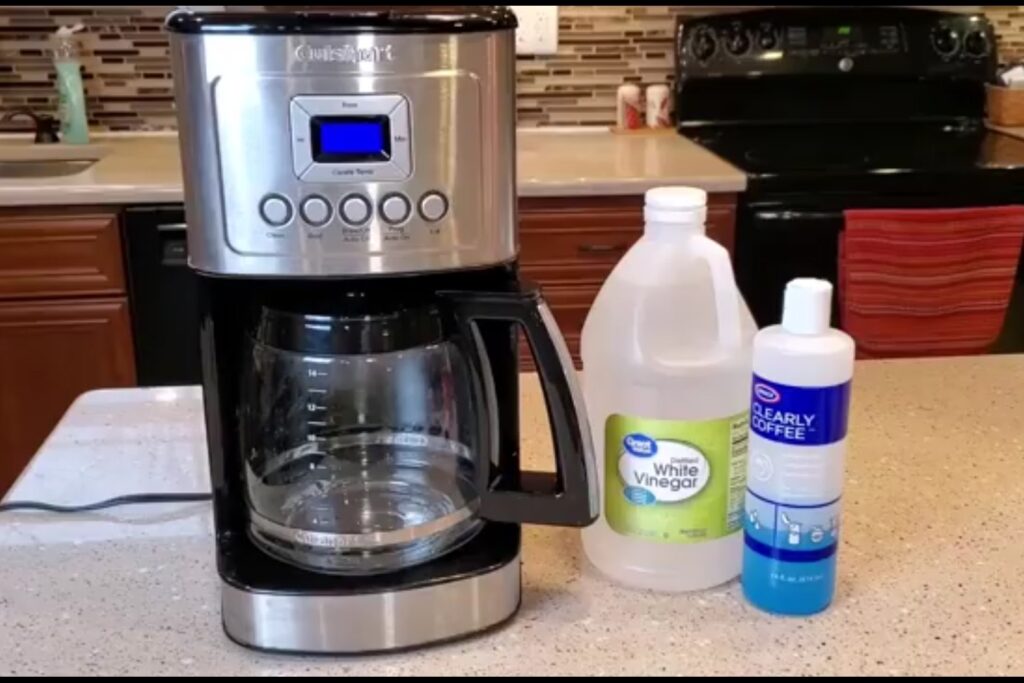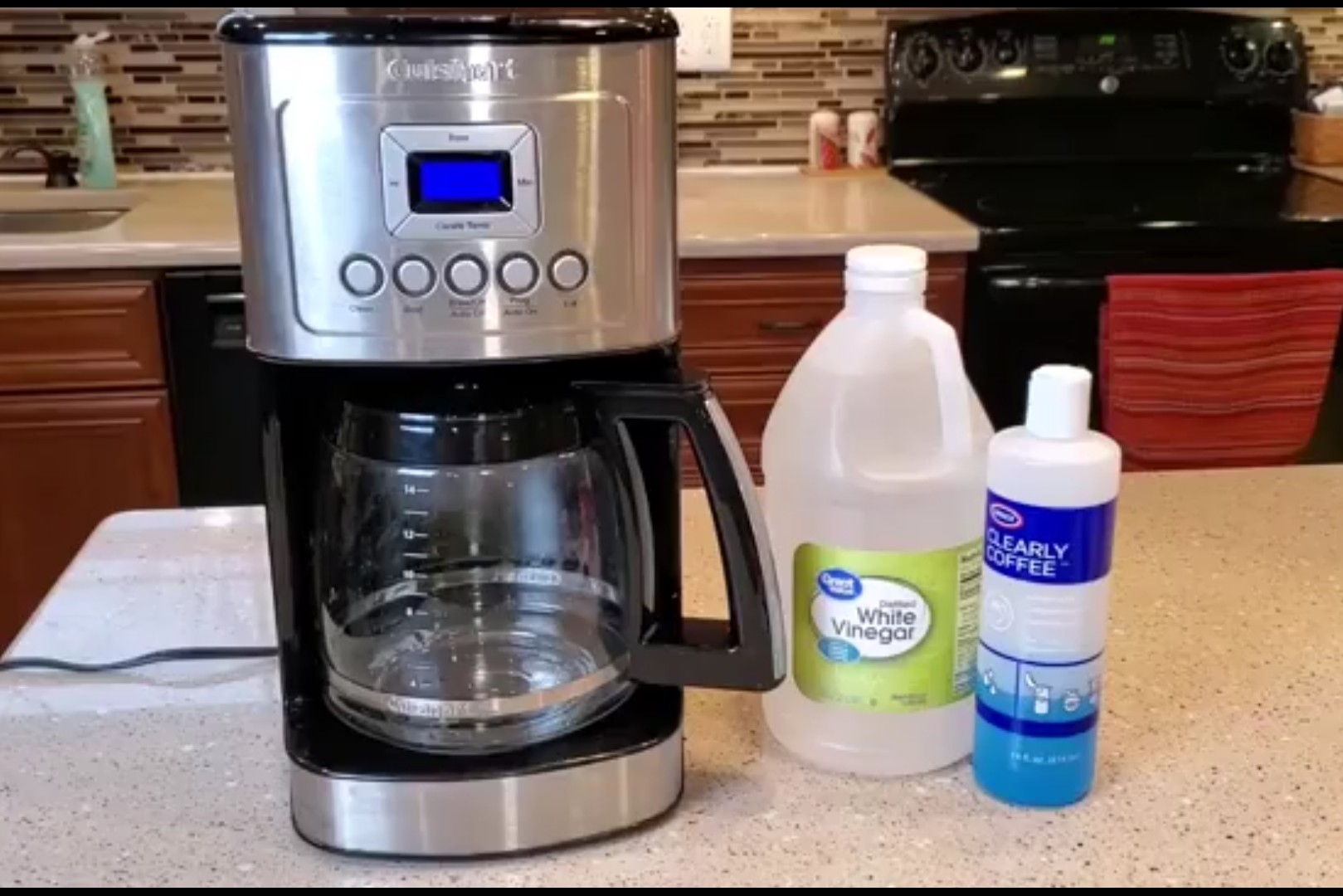
Unlocking the Secret: How to Effectively Use Vinegar to Clean Your Coffee Maker
The aroma of freshly brewed coffee is a morning ritual for millions. However, lurking beneath the surface of that perfect cup is a potential enemy: mineral buildup. Over time, calcium and other minerals from your water can accumulate inside your coffee maker, hindering its performance and, more importantly, affecting the taste of your coffee. Fortunately, a simple, readily available, and inexpensive solution exists: vinegar to clean coffee maker.
This article delves into the science behind using vinegar to clean coffee maker, providing a step-by-step guide to effectively eliminate mineral deposits and keep your machine operating at its best. We’ll explore different types of coffee makers, the best vinegar to use, and how often you should clean your coffee maker. Ultimately, we’ll empower you with the knowledge to ensure every cup of coffee is as delicious as it should be.
The Science of Buildup: Why Cleaning is Crucial
The primary culprit behind mineral buildup in your coffee maker is hard water. Hard water contains high levels of dissolved minerals, primarily calcium and magnesium. As water heats up during the brewing process, these minerals precipitate out of solution, forming scale. This scale adheres to the internal components of your coffee maker, including the heating element, water reservoir, and tubing.
This buildup has several detrimental effects. Firstly, it reduces the efficiency of the heating element, causing your coffee maker to take longer to brew. Secondly, it can lead to inconsistent brewing temperatures, which can significantly impact the flavor of your coffee. Thirdly, and perhaps most concerningly, mineral deposits can harbor bacteria and mold, potentially affecting your health. Regularly using vinegar to clean coffee maker combats all of these issues.
Choosing the Right Vinegar: What to Look For
Not all vinegars are created equal when it comes to cleaning your coffee maker. While various types of vinegar exist, the most recommended and effective choice is white distilled vinegar. Its high acidity (typically around 5% acetic acid) makes it a powerful descaling agent. It effectively dissolves mineral deposits without leaving behind any lingering flavors or odors.
Avoid using balsamic vinegar, apple cider vinegar, or other flavored vinegars. These contain sugars and other additives that can damage your coffee maker and leave an unpleasant taste in your coffee. Always opt for plain, white distilled vinegar. The affordability and accessibility of white distilled vinegar make it the ideal solution for using vinegar to clean coffee maker.
Step-by-Step Guide: Cleaning Your Coffee Maker with Vinegar
Cleaning your coffee maker with vinegar is a straightforward process, requiring minimal effort and readily available supplies. Here’s a detailed step-by-step guide:
- Prepare the Solution: Mix equal parts white distilled vinegar and water. A 1:1 ratio is ideal. For example, use one cup of vinegar and one cup of water.
- Fill the Reservoir: Pour the vinegar and water solution into the water reservoir of your coffee maker. Ensure the reservoir is filled to its maximum capacity.
- Brew the Solution: Place a clean coffee pot or carafe under the brew head. Turn on your coffee maker and allow it to run through a full brewing cycle. This process will circulate the vinegar solution through the machine, dissolving mineral deposits.
- Rinse Thoroughly: Once the brewing cycle is complete, discard the vinegar solution. Rinse the coffee pot thoroughly. Fill the water reservoir with fresh, clean water and run the brewing cycle again. Repeat this rinsing process at least two or three times to ensure all traces of vinegar are removed.
- Clean Removable Parts: Remove the coffee pot, filter basket, and any other removable parts. Wash these parts with warm, soapy water. Rinse them thoroughly and allow them to air dry before reassembling your coffee maker.
Following these steps ensures that you effectively use vinegar to clean coffee maker and maintain its optimal performance.
Cleaning Frequency: How Often Should You Clean?
The frequency with which you should clean your coffee maker depends on several factors, including the hardness of your water and how frequently you use the machine. As a general guideline, it is recommended to clean your coffee maker with vinegar every one to three months. If you use your coffee maker daily or have hard water, cleaning it more frequently is advisable. If you notice a decline in brewing speed or a change in coffee taste, it’s a clear indication that your coffee maker needs cleaning.
To get a better idea of how often you should clean your coffee maker, consider performing a simple test. Brew a pot of coffee and observe how long it takes. If the brewing time increases noticeably over time, it suggests that mineral buildup is accumulating, and it’s time to use vinegar to clean coffee maker.
Coffee Maker Types and Cleaning Considerations
The cleaning process remains largely the same across various types of coffee makers. However, some specific considerations may apply:
- Drip Coffee Makers: These are the most common type, and the standard vinegar cleaning method works perfectly. Follow the steps outlined above.
- Single-Serve Coffee Makers (e.g., Keurig): These machines often have smaller water reservoirs. You may need to adjust the amount of vinegar and water solution accordingly. Some single-serve machines have specific cleaning cycles; consult your user manual. The principles of using vinegar to clean coffee maker remain the same.
- French Press: While French presses don’t have internal components that need descaling, they can still accumulate coffee oils and residue. Clean the French press regularly with warm, soapy water. You can occasionally use a vinegar solution to remove stubborn stains or odors.
- Espresso Machines: Espresso machines can be more complex. Check your machine’s manual for specific cleaning instructions. Some espresso machines have dedicated descaling cycles. In many cases, you can still use vinegar to clean coffee maker; however, always verify compatibility with your machine’s manufacturer.
Beyond Vinegar: Other Cleaning Options
While vinegar is an excellent and cost-effective solution, other cleaning products are available. Commercial descaling solutions are specifically formulated for coffee makers. These products often contain citric acid or other descaling agents. These can be effective, but they tend to be more expensive than vinegar. Always follow the manufacturer’s instructions when using these products.
Another option is to use baking soda. While baking soda is not as effective as vinegar for descaling, it can be used to clean the exterior of your coffee maker and remove coffee stains. Mix baking soda with water to form a paste and gently scrub the coffee maker’s surfaces. Rinse thoroughly with clean water.
Regardless of the cleaning method you choose, regular maintenance is key to keeping your coffee maker in top condition. The consistent use of vinegar to clean coffee maker will ensure you enjoy great-tasting coffee for years to come.
Troubleshooting Common Issues
Even with regular cleaning, you may encounter some issues. Here are some common problems and their solutions:
- Coffee Tastes Like Vinegar: This indicates that you haven’t rinsed your coffee maker thoroughly enough after cleaning. Run several brewing cycles with fresh water until the vinegar taste is gone.
- Coffee Maker Brews Slowly: This is a sign of mineral buildup. Repeat the vinegar cleaning process. If the problem persists, the heating element may be damaged.
- Coffee Maker Won’t Turn On: Check the power cord and outlet. If the coffee maker still doesn’t work, it may require professional repair. Cleaning with vinegar to clean coffee maker shouldn’t cause this, but it’s important to note.
The Long-Term Benefits of Cleaning with Vinegar
Using vinegar to clean coffee maker regularly offers several long-term benefits. It extends the lifespan of your coffee maker by preventing mineral buildup from damaging its internal components. It ensures that your coffee tastes its best by removing residue and buildup that can affect the flavor. It also improves the efficiency of your coffee maker, saving you time and energy.
By incorporating this simple cleaning method into your routine, you can enjoy consistently delicious coffee and maintain a well-functioning coffee maker for years to come. The small investment in time and effort pays significant dividends in terms of both coffee quality and the longevity of your appliance.
Conclusion: Embrace the Power of Vinegar
Cleaning your coffee maker with vinegar is a simple, effective, and affordable way to maintain its performance and ensure your coffee always tastes its best. By following the steps outlined in this guide and incorporating regular cleaning into your routine, you can enjoy the perfect cup of coffee every morning. So, embrace the power of vinegar to clean coffee maker and unlock the full potential of your morning ritual. This practice not only improves your coffee’s flavor but also extends the life of your coffee maker, making it a win-win for any coffee enthusiast.
[See also: How to Clean Your Coffee Maker with Baking Soda] [See also: Best Coffee Makers for 2024] [See also: Water Filters for Coffee Makers: Do They Really Make a Difference?]


